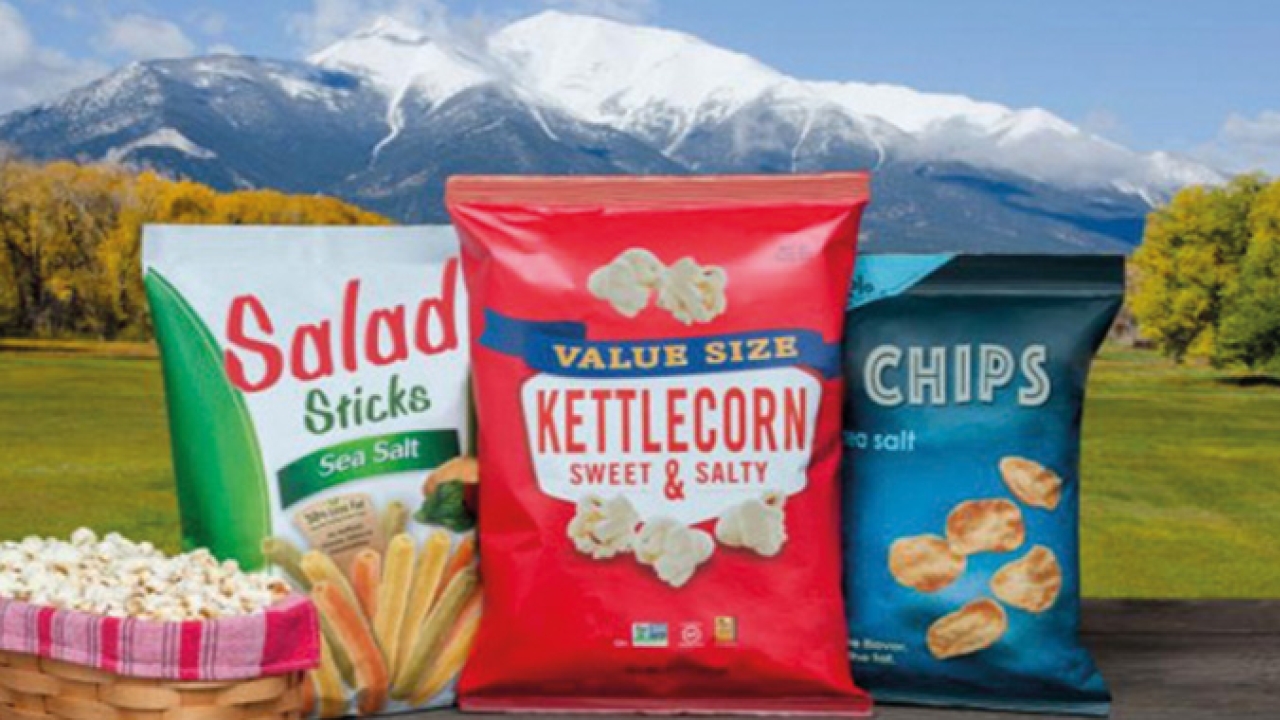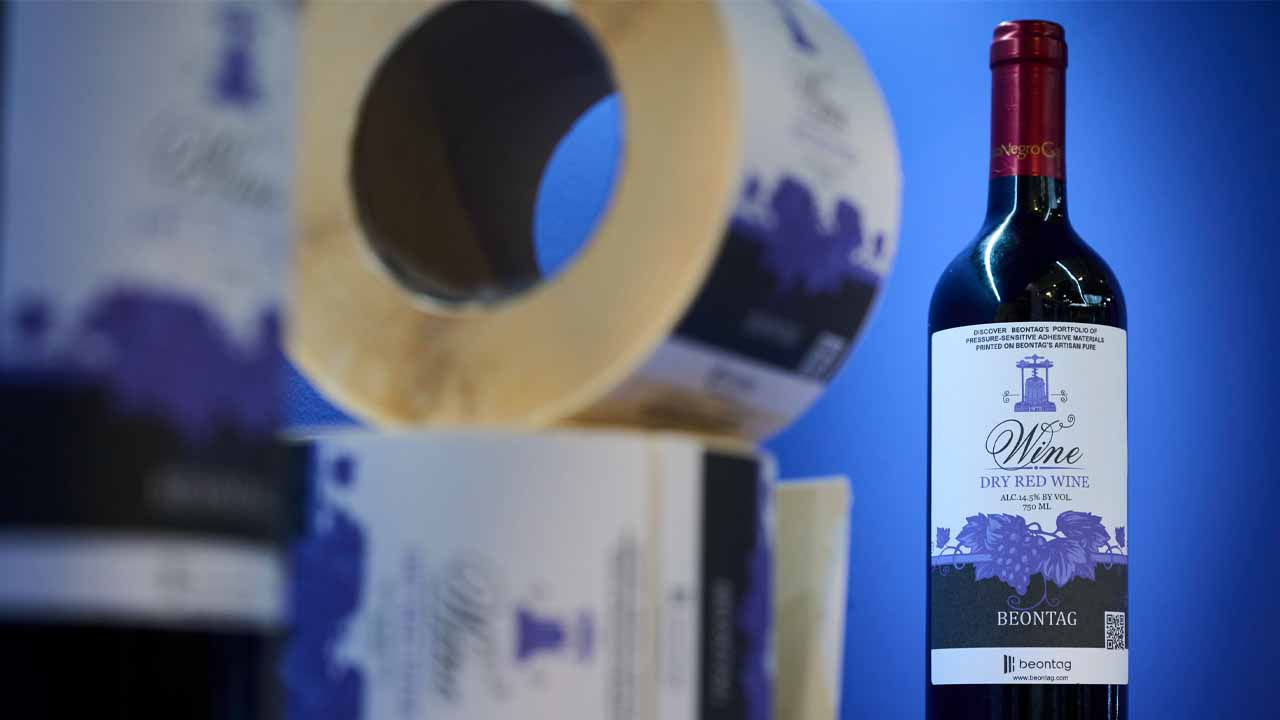Flexible packaging: applications and opportunities

Flexible packaging has one of the highest growth rates across all printing sectors, achieving an annual global growth of close to five percent. For the label converter looking to move into flexible packaging it is interesting to note that all the key end-use markets and the drivers of growth are virtually the same for both labels and flexibles. The label converter will often already be supplying labels to the same customers who are sourcing flexibles.
Flexible packaging buyers are certainly now looking for more cost-effective (or added-value) solutions, faster job turnarounds, versioning and variable data, just-in-time and on-demand printing, and reduced inventory costs. Something that the self-adhesive label converter has long been called upon to provide to his customers.
This all means that with flexible packaging run lengths and pack sizes getting smaller, as well as the possibility of adding in-line value and perhaps personalization, multi-versions and variations, there are undoubted opportunities for narrow and mid web label converters (using both flexo and digital technology) to capture a growing portion of the flexibles market that is not suited to wider web CI flexo or gravure presses as they struggle to print the smaller and higher added-value print and finishing run lengths economically.
“There are undoubted opportunities for narrow and mid web label converters to capture a growing portion of the flexibles market that is not suited to wider web CI flexo or gravure presses”
Indeed, research in the US has already shown that jobs with the shortest run sizes are in pouches of any kind, as well as single serve and one-dose packs and sachets. These are key areas where label converters can most readily enter the flexible packaging market. Narrower and mid web (especially in the 430-450mm range) conventional and digital printing has effectively opened up the market to a whole range of new customers who have never previously had a solution for short-run flexible packaging orders.
Traditionally, lead times for flexible packaging printing on wide format flexo and gravure presses have been anything up to 40 or more days. Today, narrower and mid web flexo and digital production technology has been able to bring this down to nearer ten days, or even less.
Certainly, there are many narrower and mid web in-line style printing presses (servo-driven machines in narrower web widths) today that are now able to handle these shorter flexible packaging pouch and sachet runs that fit within the press web widths. Servo drives and controls have helped overcome the main challenges that have historically plagued the flexo market, such as gear marking, while ever-more sophisticated web handling and temperature control features on narrower web presses have made the handling and printing of thinner films far more accurate and precise.
The main market sectors for flexible packaging are food and beverages, consumer and household products, pharmaceutical and medical, healthcare, cosmetics and toiletries, retail non-food, industrial applications, nutritional and supplements, agricultural, horticulture and veterinary and pet foods.
Most of these sectors are already well served by the narrow and mid web label converter, so will be well-known to them in terms of market requirements, lead times, service, quality performance and, probably, with many of the same customers or buyers also sourcing flexible packaging. For the label converter therefore, it maybe is not so much about finding new customers, but about understanding and servicing the shorter-run, smaller-size, added-value and niche flexible packaging requirements of existing customers ‒ something which a growing numbers of label converters have been successfully and profitably achieving in recent years.
Food and beverage
Food and beverage flexible packaging, both retail and institutional, is said to account for a near 60 percent of all flexible packaging applications, with some market studies claiming a market share as high as 80 percent. It largely depends on exactly what a specific study includes. Does it include shrink sleeves or not? Does it include industrial applications?
Whichever way the market is analyzed, food and beverages are by far the biggest markets for flexible packaging. Indeed, as they are for labels. They therefore provide the biggest opportunity for the narrow and mid web converter.
In particular, the rising demand for snack and convenience foods in small or single size portions, increased spending on bakery and cereal bars, short-run ready meals and coffee or hot chocolate sticks and pouches, dehydrated and dry foods (instant soup, gravy and sauce packets, rice, food mixes), snack foods and nuts, spice foods, chocolates and sweets, ice-cream novelties, bakery products such as cookies (biscuits), cakes and chips (crisps).
Stand-up gusseted pouches and pillow pouches are widely used as flexible packaging products in the food sector. Pillow pouches have also witnessed high gains due to their increasing usage in the food, beverages and dairy industries. Low cost, high sealing ability and cost-efficient transportation are some of the key properties positively influencing product penetration.
“Stand-up pouches have become one of the most preferred flexible packaging products, owing to their versatility and features such as high barrier properties against oxygen and moisture, low material consumption, and cost-effectiveness”
Stand-up pouches have become one of the most preferred flexible packaging products, owing to their versatility and features such as high barrier properties against oxygen and moisture, low material consumption, and cost-effectiveness.
Thermally processed foods are packed in these products to extend the shelf life. Other flexible packaging products used in the food sector include retort pouches, four side seal pouches, a wide variety of lidding, and portion packs. Lidding is also widely used for yogurt, cream and dessert pots.
Lidding films not only seal and protect the product but can perform an important decorative function. Most lidding films are designed to be peelable to allow easy access to pack contents
Pre-printed wrappers and decorative bands are another effective way for flexible pack branding and packaging of foodstuffs. Flow wrappings are typically used on confectionery, sweets, butter packs, etc. In many cases products are completely over wrapped in paper or film to form an airtight seal.
A steadily shifting preference for aesthetically appealing food products is also fueling flexible packaging market demand. Increasing extended shelf life requirements along with preservation from contamination also open new avenues for industry growth in the food and beverages sector, along with rising consumer consciousness pertaining to food safety and hygiene.
Health, beauty and personal care
The healthcare, cosmetics, toiletries and personal care markets have long provided a wealth of opportunities for the label converter. Now, they also offer the opportunity to diversify into the production of high quality sachets, pouches and packs for many different ‒ often shorter run lengths of multiple versions and variations ‒ types of flexible packaging for the whole health and personal care market that includes toiletries, hygiene, shampoo, liquid soaps, creams, lotions, gels, cosmetics products, beauty products, wipes and packs.
Flexible packaging technology is one of the key sectors predicted to witness significant growth over the coming years owing to growing middle-class populations, rising disposable incomes, and the escalating demand for all types of healthcare, cosmetics and toiletries products. New product launches by major brands in emerging markets (such as in India and China) are also projected to motivate the growth of the global cosmetics sector.
Ongoing innovations and applications in this sector which are predicted to continue to drive growth opportunities for label converters include all kinds of creams and gels (used extensively by the cosmetics, personal care and haircare industries), impregnated hand and tissue wipes, nutricosmetics, travel-sized creams, bath soaks, non-free-flow powders such as talcum powder ‒ many of these applications being in sachets.
Pharmaceutical, nutritional, nutraceutical, veterinary and medical
The pharmaceutical and related sectors are variously recorded as the second biggest application section for flexible packaging, with both trends in healthy living and increasing incidences of lifestyle related diseases among the working population expected to boost the demand for pharmaceutical, nutraceutical and medical items ‒ which in turn will optimistically affect the flexible packaging and narrower web markets of tomorrow.
“The more successful narrower and mid web flexible packaging converters today are creating a new type of service model that makes the selection and purchasing of high quality flexible packaging in smaller sizes and shorter runs as fast and easy as possible”
This sector is quite diverse in its array of products, which today ranges through all kinds of pharmaceutical products and ointments to weight loss and dietary supplements, sports nutrition supplements such as protein drink mixes and shakes, pre-workout powders, energy bars, foods for special dietary needs, powdered energy or vitamin drinks, spices, effervescent tablets, capsules and powders.
Single-dose packaging such as single-use pouches and stickpacks provide today’s on-the-go consumers of nutritional and nutraceutical products with portability and convenience.
Stickpack packaging in particular, is widely used by many leading nutritional brands for products such as drink mix supplements and protein powders, especially offered with easy open or tear propagation or laser scoring.
Animal care
A PCI Wood Mackenzie study of flexible packaging in Europe identified pet food as being the best performing flexible packaging category. Pouches for pet foods and pet products are identified as the fastest-growing segment of the animal care market, due to them being easy to carry, store and re-seal to ensure freshness.
Within the whole animal care sector are a wide range of products suitable for printing by label converters that include pet foods, pet care products, pet treats, veterinary powders and animal products, wild bird and wild animal feeds ‒ with a great many short-runs of single serve pouches and gusset bags being produced on a regular basis for wet, semi-wet and dry pet foods.
Pet food packaging can be a challenge. It needs to prevent spillage, stand-up to multiple use, and maybe offer convenience features, such as re-closure or handle options.
Retail non-food, home and garden
Depending on the particular market study viewed, the whole non-food, home, DIY and garden sector accounts for up to 10 percent of the flexible packaging market, with products that include household items, laundry detergents, soaps, bath salts, under-the-sink packs, paints, pastes and plaster, lawn care, fertilizer, pesticides, grass seed, compost and bark.
Many of these products are packed in large bags and not suitable for the narrow and mid web converter, but smaller-sized flexible pouches and bags ‒ both stand-up and flat ‒ are also widely used and do provide an opportunity for single-use situations, such as flower and vegetable seeds.
Industrial applications
With some studies showing industrial applications for flexible packaging being as high as six percent of the market, there are undoubtedly some opportunities for the label converter, especially for companies that are already supplying labels into this sector and have potential customers that would also buy stand-up pouches and bags or sachet products from them.
Flexible packaging for industrial applications may require custom-made bag and pouch films and laminated rollstock specifically constructed to handle industrial powders, granular chemicals, lubricants, agricultural products and other such applications.
Making the most of the opportunities
As a number of label converters are already proving, flexible package printing represents an opportunity for PS label converters to widen their product portfolio, compete on short-runs and smaller packs, and utilize high quality flexo, digital, combination and hybrid press technology (plus in-line lamination, added value embellishing or cold foiling), to increase the range and variety of high quality printed products produced.
Put together, the right width narrow and mid web presses, both conventional and digital, now offer label and flexible packaging converters the opportunity to target new short-run flexible packaging applications, multiple SKUs, to drive differentiation and personalization, offer faster turnaround and quicker delivery and reduced stockholding ‒ and become more profitable.
As can be seen, the possible opportunities cover almost all types of consumer food, pharmaceutical, health and beauty, nutritional, garden, DIY, leisure and other retail market applications, as well as increasingly moving in to the industrial, automotive, agricultural, horticultural and medical sectors. Packaging types open to the label converter for this variety of products and applications are largely found or seen as being in stand-up pouches, lay flat pouches, sachets, lidding, and roll flow-wrapping materials.
But it’s not just about the print opportunities, successful converters targeting the flexible packaging market are particularly finding new business opportunities with the independent and more regional brands, helping these smaller and medium-sized company buyers to simplify how they buy their flexible packaging, and guiding them in understanding the specifications, tolerances, materials, origination, color technology, inks, and print requirements.
Quite simply, the more successful narrower and mid web flexible packaging converters today are creating a new type of service model that makes the selection and purchasing of high quality flexible packaging in smaller sizes and shorter runs as fast and easy as possible.
For more information, go to www.label-academy.com
Stay up to date
Subscribe to the free Label News newsletter and receive the latest content every week. We'll never share your email address.


